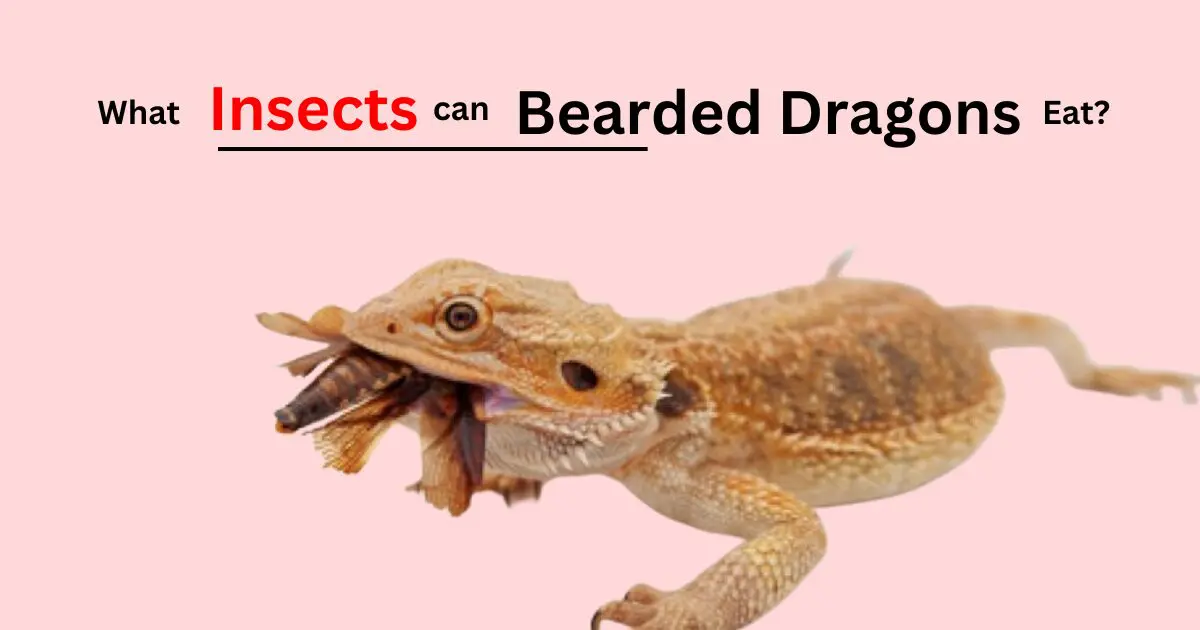The increased popularity of bearded dragons as pets can be attributed to their simple diet to some extent. They are not demanding eaters and are easy to feed. From insects to vegetables, they eat a wide range of food. So, what insects can bearded dragons eat?
Both young and adult bearded dragons rely on insects for protein. They can eat crickets, dubia roaches, butterworms, cockroaches, locusts, etc. Young beardies need to eat insects more frequently than adult ones. Gut loading and dusting the insects before feeding is recommended.
Feeding insects in the right manner is important. Let’s see which insects are safe and how many of them to feed to your lizards.
What Insects Can Bearded Dragons Eat
Bearded dragons are omnivorous reptiles. It means that they need to eat both insects and vegetables. They also eat fruits like raspberries, grapes, green apples, etc. When it comes to insects, this is a crucial part of their diet.
Insects should make up 50% of a young beardie’s diet and 20% for adults. Here’s a list of 15 insects that both young and adult bearded dragons can eat:
- Crickets
- Dubia roaches
- Mealworms
- Phoenix Worms
- Superworms
- Hornworms
- Locusts
- Black Soldier Fly Larvae
- Silkworms
- Waxworms
- Grasshoppers
- Discoid Roaches
- Pacman Frog Feeder Roaches
- Houseflies
- Blow Flies, etc.
5 Best Feeder Insects for Bearded Dragons
Though beardies eat a good many insects, not all of them are easy to get. So, let me help you with the nutrition profile and benefits of some of the commonly found insects in the USA that you can add to your reptile pet’s diet.
1. Crickets
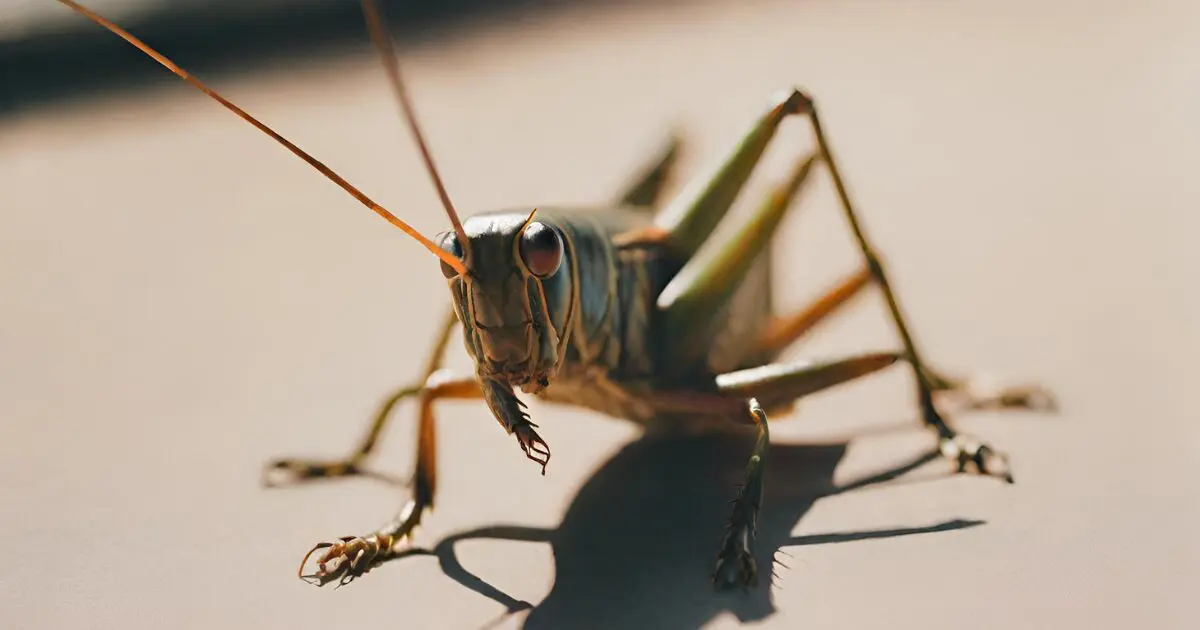
The most commonly fed insect to bearded dragons is crickets. They also like the taste of it. Young beardies can eat 20 to 60 crickets on a regular basis. These invertebrates are rich in nutrition for them.
| Nutrient name | Amount (per 100g) |
| Protein | 15.4 g |
| Moisture | 77.1 g |
| Fiber | 2.2 g |
| Calcium | 2.8 mg |
| Phosphorous | 25 mg |
| Fat | 3.3 g |
Here is a thing you need to remember. Some body parts of this insect can be difficult for beardies to eat or digest. And you must not feed dead crickets to them. Also, avoid purchasing them from bait shops since they often carry parasites.
2. Mealworms
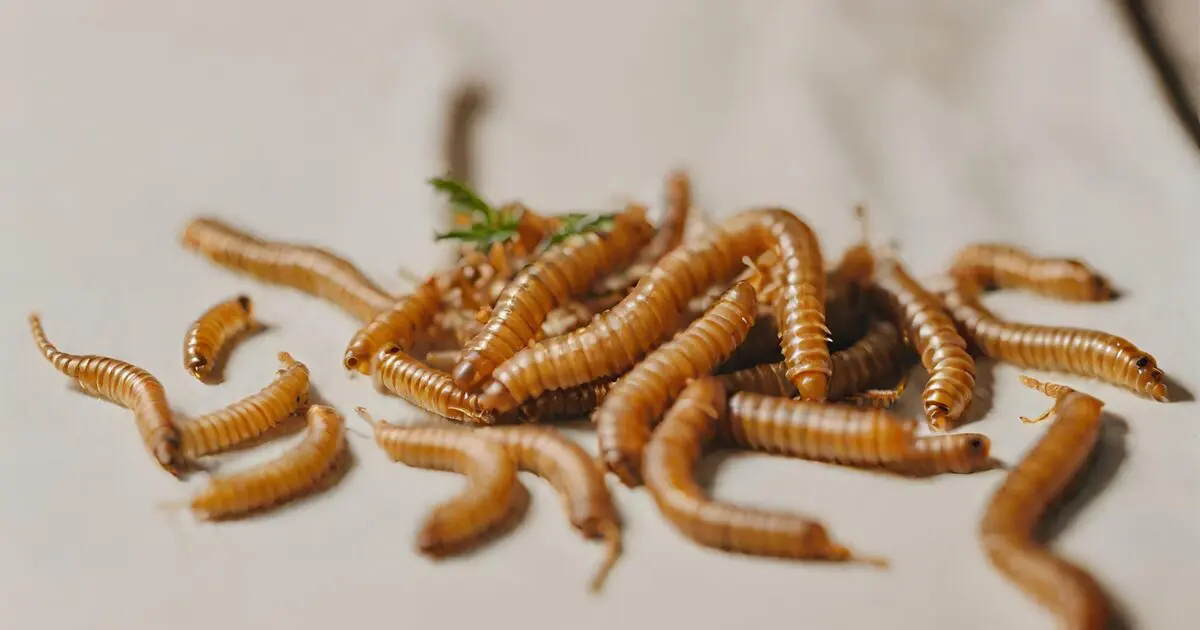
| Nutrient name | Amount (per 100g) |
| Protein | 18.7 |
| Moisture | 61.9 |
| Fiber | 2.5 |
| Calcium | 169 |
| Phosphorous | 2950 |
| Fat | 13.4 |
| Ash | 0.9 |
Mealworms are the larval stage of the darkling beetle. They have a tough exoskeleton and come in various sizes. The smaller ones are better suited for young bearded dragons. While readily available and easy to store, they are higher in fat.
- Offer as a tasty occasional treat due to their higher fat content.
- A great source of protein for young, growing bearded dragons.
- The presence of a high amount of phosphorus in comparison to calcium is also a concern.
3. Superworms
| Nutrient name | Amount (per 100g) |
| Protein | 19.7 g |
| Moisture | 57.9 g |
| Fiber | 2.7 g |
| Calcium | 17.7 mg |
| Phosphorous | 237 mg |
| Fat | 17.7 g |
| Ash | 1.0 g |
Superworms are the larger, more mature version of mealworms. They boast an impressive size. They can be a tempting treat for adult bearded dragons. They offer a good source of protein and some essential nutrients.
- Superworms are a fun and exciting food for adult bearded dragons due to their size.
- They offer a good source of protein to support your dragon’s health.
- Superworms are high in fat, so feed them sparingly to avoid obesity in your dragon.
- Their large size can be a choking risk for young bearded dragons.
- Superworms can bite, so supervise feeding times to prevent injury.
4. Black Soldier Fly Larvae
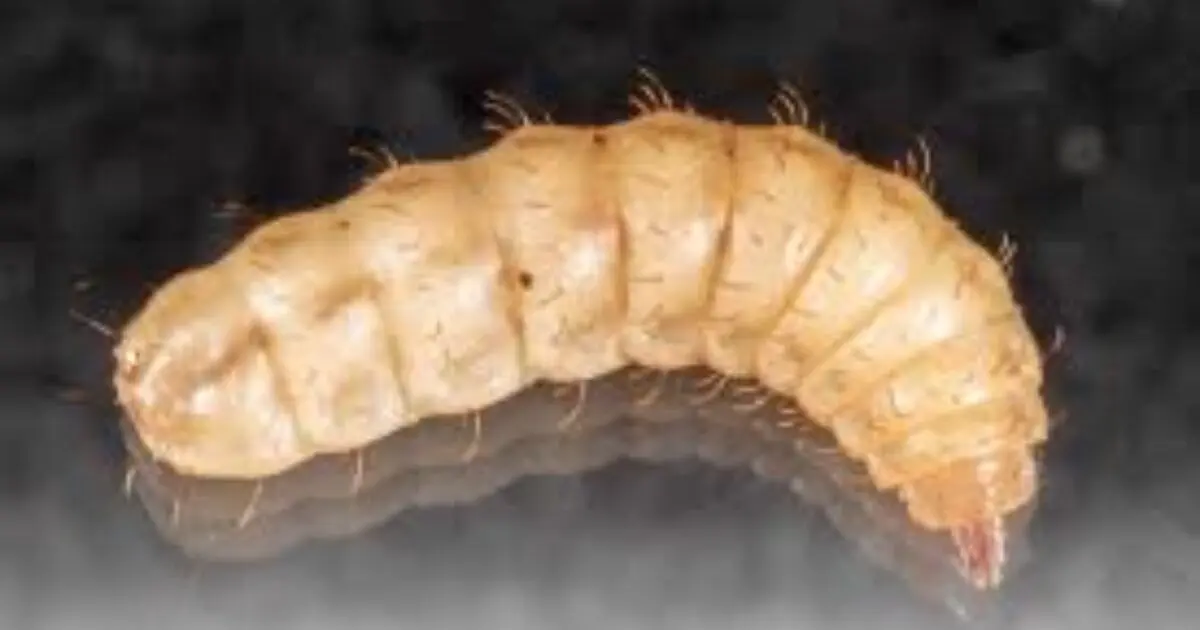
| Nutrient name | Amount (per 100g) |
| Protein | 17.5 g |
| Moisture | 61.2 g |
| Fiber | 3 g |
| Calcium | 934 mg |
| Phosphorous | 356 mg |
| Fat | 14 g |
| Ash | 3.5 g |
Black Soldier Fly Larvae (BSFL) are wriggling nutritional powerhouses for bearded dragons. They are packed with protein and calcium. BSFL is a rising star in the feeder insect world. They’re easy to digest and can be gut-loaded for extra nutrients.
- High in protein and calcium, essential for bearded dragon growth and health.
- Compared to other feeders, BSFLs are lower in fat.
- Their soft bodies are gentle on your bearded dragon’s digestive system.
- Hold onto gut-loaded nutrients well, passing them on to your pet.
- Less widely available than feeder staples like crickets.
- It may be less appealing to bearded dragons due to their lack of movement.
5. Goliath Worms
| Nutrient name | Amount (per 100g) |
| Protein | 9 |
| Moisture | 85 |
| Fiber | n/a |
| Calcium | 46.4 mg |
| Phosphorous | 139.4 mg |
| Fat | 3.07 |
| Ash | n/a |
Goliath worms are another name for hornworms, a popular feeder insect for bearded dragons. These plump caterpillars are high in moisture and a good source of hydration. However, they are also high in sugar. Therefore, it should not be fed regularly.
- High moisture content helps bearded dragons stay hydrated. This feature is especially beneficial in hot weather.
- Goliath worms are a tasty change of pace for your beardie due to their sugar content.
- Offers low protein and other nutrients compared to other insects.
- Their high sugar content can lead to digestive issues if fed too frequently.
- Best offered sparingly as a treat, not a staple food source.
6. Waxworms
| Nutrient name | Amount (per 100g) |
| Protein | 14.1 |
| Moisture | 58.5 |
| Fiber | 3.4 |
| Calcium | 24.3 mg |
| Phosphorous | 165 mg |
| Fat | 24.9 |
| Ash | 0.6 |
Waxworms are the soft-bodied larvae of the wax moth. They’re packed with fat and offer a tempting, high-calorie treat for bearded dragons. Nonetheless, they must not be the primary food for beardies because they are high in fat content.
- Great for underweight bearded dragons needing a quick energy surge.
- The wiggling nature of waxworms can stimulate a feeding response in picky eaters.
- Packed with fat and low in other nutrients. It can lead to overweight and obesity.
- Their high fat content can cause digestive issues in some bearded dragons.
- It is not a well-balanced food source and shouldn’t be a staple in your dragon’s diet.
7. Dubia roaches
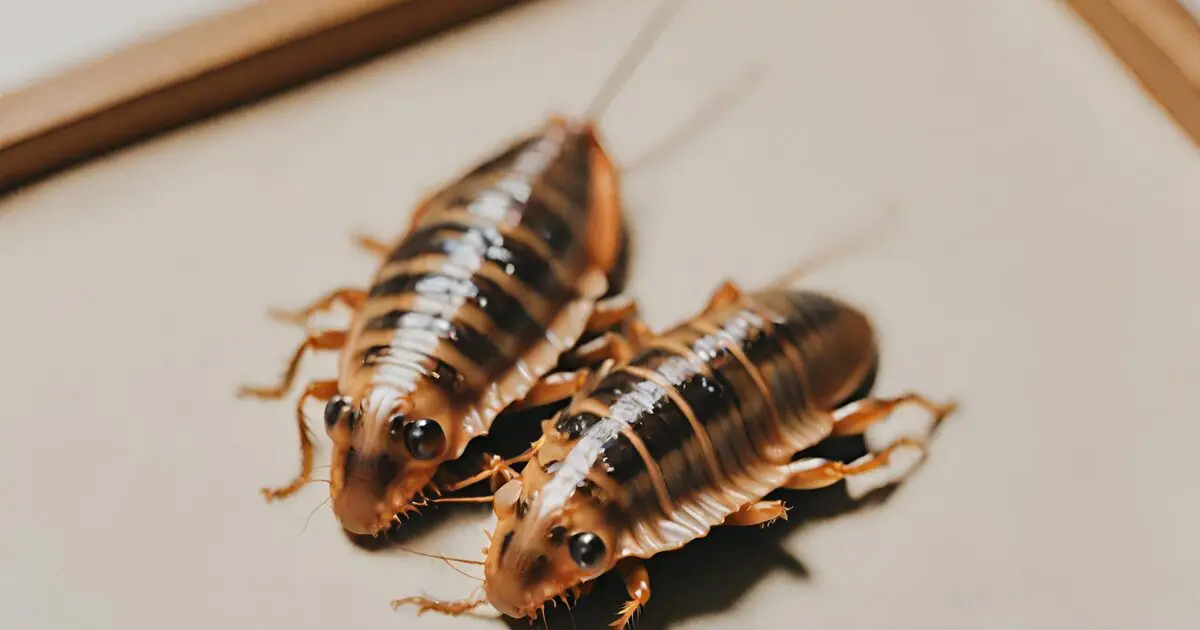
| Nutrient name | Amount (per 100g) |
| Protein | 21.4 g |
| Moisture | 71.5 g |
| Fiber | 2.6 g |
| Calcium | 70 mg |
| Phosphorous | 260 mg |
| Fat | 3.1 g |
| Ash | 1.3 g |
Dubia roaches are a much safer option than crickets. They tend to have fewer parasites and are easy to find. Other benefits of adding dubia roaches to beardies’ diets include the following:
- More protein for a strong dragon
- Softer bodies for happy digestion
- Pass on extra nutrients to your pet if gut-loaded before feeding
- With dubia roaches, there is less chance of rogue roaches.
- These insects do not make noise but are munchy for dragons.
How to Feed Insects to Bearded Dragons?
Insects are a must-needed element in a bearded dragon’s diet. Here’s a step-by-step guide on safely feeding insects to your bearded dragon:
Step 1: Choose Appropriate Insects
Select insects based on your bearded dragon’s age and size. Young dragons need smaller insects like phoenixworms or silkworms. Adults, in contrast, can handle crickets, dubia roaches, or superworms. Avoid wild-caught insects as they may lead to various parasite symptoms. Opt for commercially bred feeder insects from a pet store.
Step 2: Gut-Loading (Optional)
Gut-loading involves feeding your feeder insects nutritious foods before giving them to your pet. You can feed them chopped vegetables and calcium powder 24-48 hours before offering them to your dragon. This ensures your bearded dragon gets essential vitamins and minerals from the insects.
Step 3: Prepare the Feeding Area
You need to remove any uneaten food or feces from your bearded dragon’s enclosure before feeding. This ensures they are not going to eat anything harmful. Make sure there is a shallow feeding dish to prevent t your dragon from ingesting substrate.
Step 4: Dusting with Calcium Powder (Optional)
For young or growing bearded dragons, lightly dust the insects with a calcium supplement with D3 before feeding. This helps with proper bone development. Shake off any excess powder.
You can put the insects inside a plastic bag containing calcium powder. Then, shake the bag to mix the insect with powder. Don’t shake too hard to prevent injury to the insects.
Step 5: Offer the Insects
You can follow any of the two methods of feeding insects to beardies.
- Tong Feeding: Use tongs to gently hold the insect and wiggle it in front of your bearded dragon. It stimulates its hunting instincts.
- Feeding Dish: Place a few insects in the feeding dish and allow your dragon to hunt and eat at its own pace.
Step 6: After-works
Always supervise your bearded dragon during feeding time. It is especially important for younger dragons. This helps prevent injuries from feeder insects or accidental substrate ingestion.
You must remove uneaten insects after 10 to 20 minutes. Leaving them in can stress your dragon or allow them to escape.
Additionally, keep an eye on your bearded dragon’s weight and overall health. Adjust the amount and type of feeder insects based on their needs.
Importance of Feeding Insects to Bearded Dragons
Feeder insects are a crucial part of a bearded dragon’s diet. It provides them with essential nutrients and mimics their natural hunting instincts. Let’s see other benefits of insects in your pets.
1. Helps in Growth
Insects are a vital building block for bearded dragon growth. How? They are the primary source of protein, which fuels muscle development. Also, it contributes to tissue repair and overall growth.
Young, growing dragons especially require this protein boost for healthy bone formation and strong bodies. The presence of fats along with protein converts into energy and helps them stay healthy, active, and strong. Lack of protein is a major reason for bearded dragons not growing.
2. Stimulates Hunger
Feeder insects act as a natural appetite stimulant for bearded dragons. Their movement triggers a hunting response in these insectivores. This instinctive behavior increases your bearded dragon’s interest in food. It promotes healthy eating habits and ensures they consume the nutrients they need to thrive.
3. Aids in Digestion
Feeder insects help bearded dragons digest their food. The tough outer shell of insects, called the exoskeleton, contains chitin. Chitin aids digestion by breaking down food in the bearded dragon’s stomach. This helps them absorb nutrients from their meals.
4. Maintains Healthy Weight
Feeder insects can help bearded dragons stay at a healthy weight. They are lower in calories compared to fatty treats. This helps prevent obesity, a common problem in captive reptiles.
Since bearded dragons are less active in captivity, feeder insects offer a balanced food source.
How Do Bearded Dragons Catch Prey?
Beardies are natural hunters. They eat many different types of insects in wildlife. Feeding them insects helps mimic and stimulate this natural behavior.
- Bearded dragons are ambush predators, lying in wait for unsuspecting prey. Their excellent eyesight allows them to spot insects from a distance.
- Once they see prey, bearded dragons can lunge surprisingly fast. They use their strong legs to close the gap.
- Their long, sticky tongue unfurls in a flash and captures the insect with a powerful adhesive lick. The tongue size of bearded dragons allows them to snatch prey even beyond their immediate reach.
- Their powerful jaws then crush and consume the insect, with the chitinous exoskeleton aiding digestion.
FAQ
Check the below questions that will help you understand the relation between beardies and insects.
1. Can Bearded Dragons Eat Any Insects?
Bearded dragons shouldn’t eat just any insect. Wild-caught insects can carry parasites. Some feeder insects are too fatty or lack essential nutrients. Stick to commercially bred feeder insects from a pet store.
2. What Insects Do Bearded Dragons Like Most?
Bearded dragons don’t necessarily have a single favorite. However, they tend to be drawn to the movement of crickets and dubia roaches. Nonetheless, a varied diet with different feeder insects is ideal for their health.
3. Can Bearded Dragons Survive Without Insects?
No, bearded dragons cannot survive without insects. Insects provide essential protein, fat, and other nutrients they can’t get from plants alone. It can restrict their growth, energy, and also overall health.
Conclusion
I believe you have understood by now what insects bearded dragons can eat. While crickets and dubia roaches are popular choices, explore other options. Don’t forget to maintain a variety for an ideal diet.
Remember, commercially bred feeder insects from a pet store are the safest option. Always consult your vet for specific recommendations on feeder insects and portion sizes for your bearded dragon.
